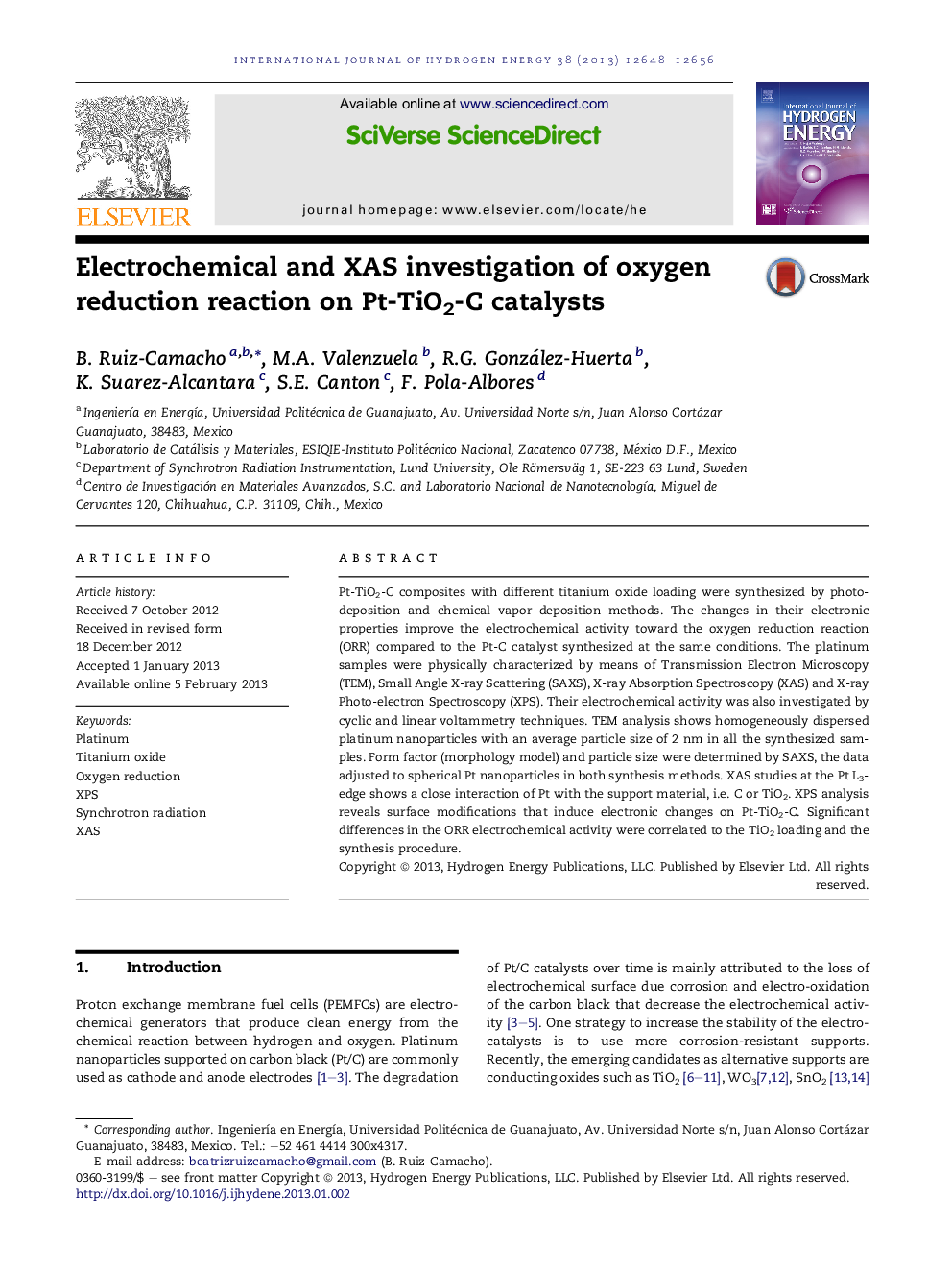| Article ID | Journal | Published Year | Pages | File Type |
|---|---|---|---|---|
| 1281497 | International Journal of Hydrogen Energy | 2013 | 9 Pages |
Pt-TiO2-C composites with different titanium oxide loading were synthesized by photo-deposition and chemical vapor deposition methods. The changes in their electronic properties improve the electrochemical activity toward the oxygen reduction reaction (ORR) compared to the Pt-C catalyst synthesized at the same conditions. The platinum samples were physically characterized by means of Transmission Electron Microscopy (TEM), Small Angle X-ray Scattering (SAXS), X-ray Absorption Spectroscopy (XAS) and X-ray Photo-electron Spectroscopy (XPS). Their electrochemical activity was also investigated by cyclic and linear voltammetry techniques. TEM analysis shows homogeneously dispersed platinum nanoparticles with an average particle size of 2 nm in all the synthesized samples. Form factor (morphology model) and particle size were determined by SAXS, the data adjusted to spherical Pt nanoparticles in both synthesis methods. XAS studies at the Pt L3-edge shows a close interaction of Pt with the support material, i.e. C or TiO2. XPS analysis reveals surface modifications that induce electronic changes on Pt-TiO2-C. Significant differences in the ORR electrochemical activity were correlated to the TiO2 loading and the synthesis procedure.
► The activity of Pt-TiO2-C composites for the ORR was determined. ► The oxide loading effect on the ORR activity was evaluated. ► XAS and XPS results confirm a strong metal–support interaction. ► The role of TiO2 can be addressed as co-catalyst of Pt for the ORR.
